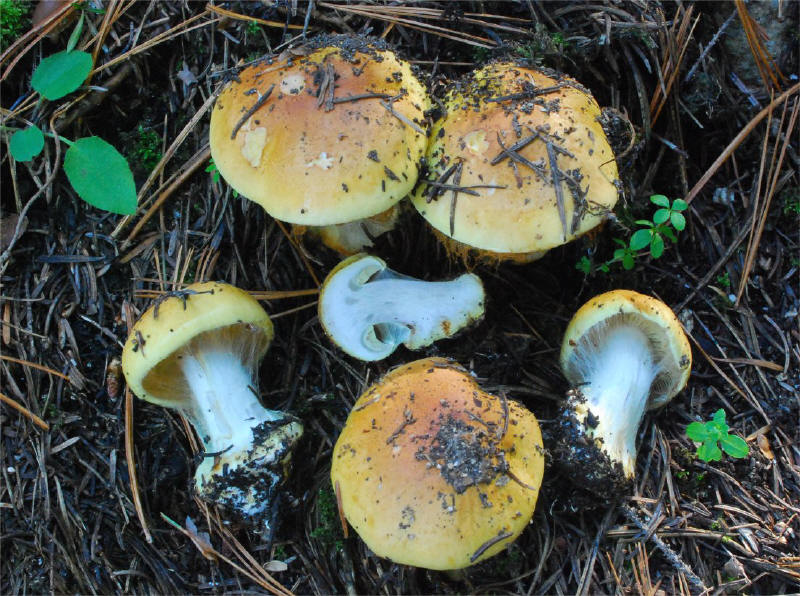 |
| This species can be interpreted almost
as a twin to Cortinarius cedretorum with the habitat being the
primary difference. Cortinarius aureofulvus is known from montane
conifer forests with calcareous soils. Both species feature a yellow orange
cap contrasted by a slightly bluish context. Unlike cedretorum,
this species has almost no reaction to alkaline solutions on the context.
Moser has recognized it from Western North America with multiple
collections. |
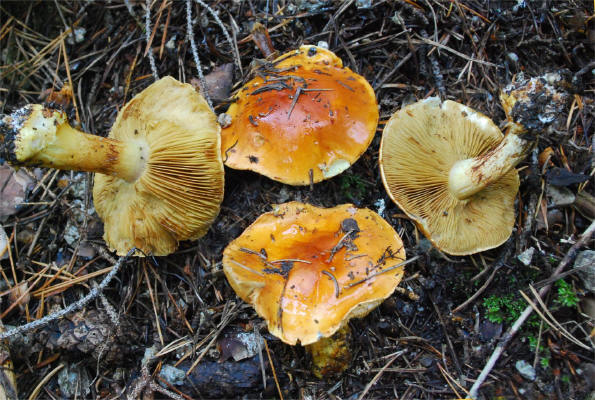
Mature collections have more saturated colors. |
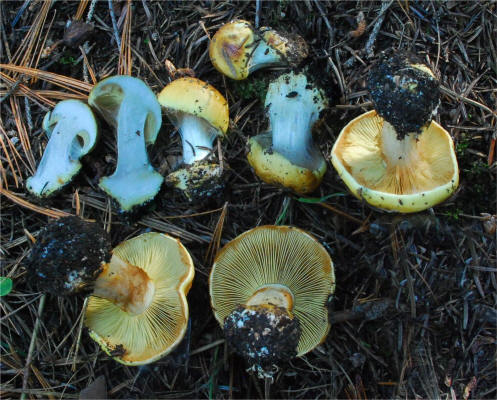
Collection of young fruitbodies. |
|
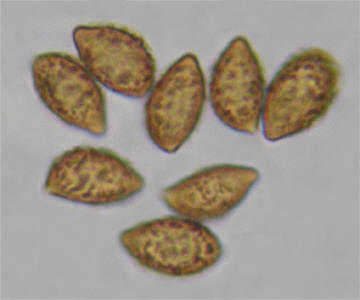
Spores: 10.2-12.3x6-7.3µ very coarsely verrucose |
_small.jpg)
KOH5%: blood red to purplish on cap, banal on context. |
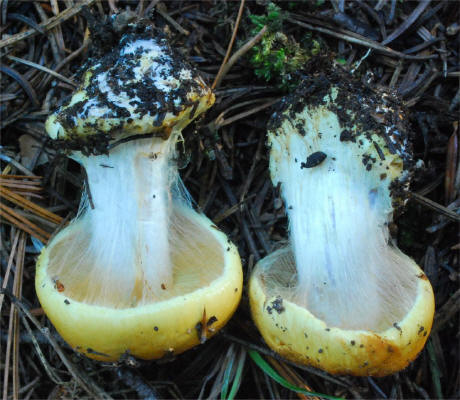 |
|




_small.jpg)
